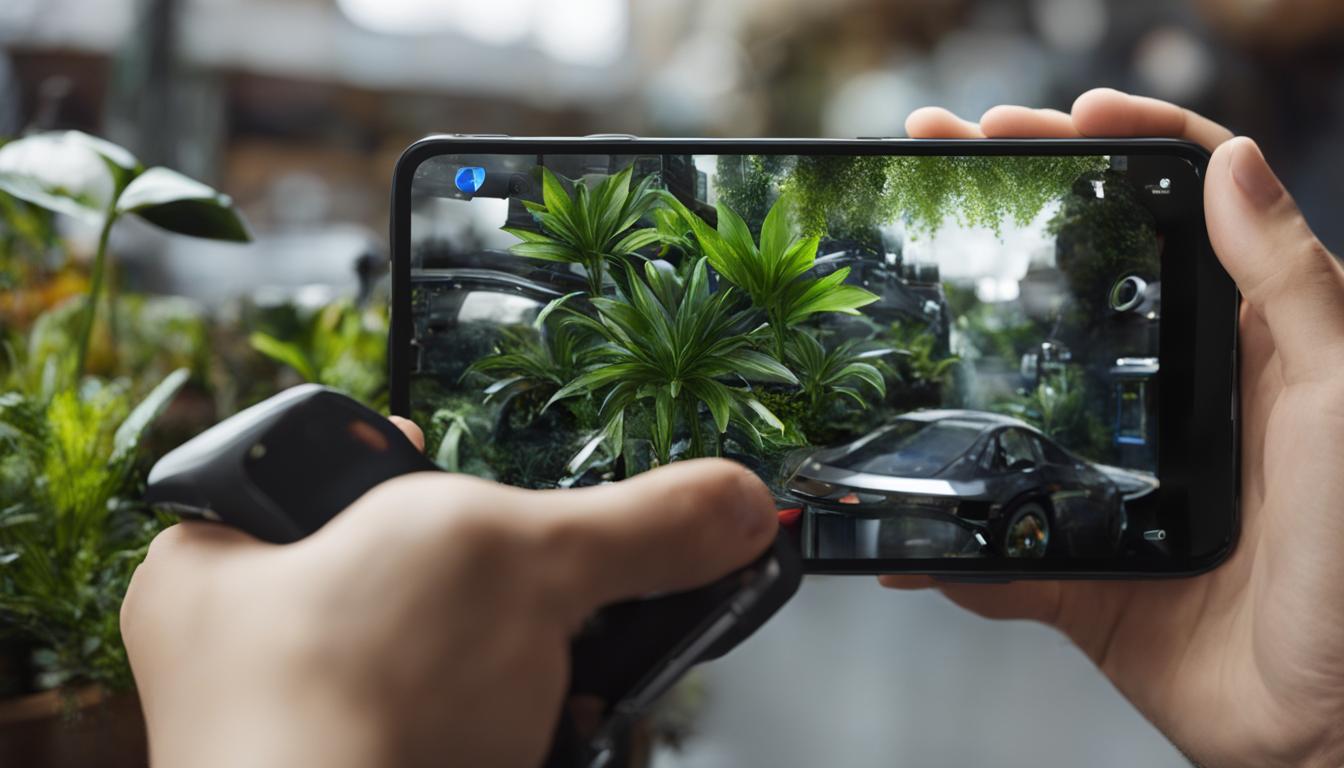Google Cardboard is a virtual reality platform developed by Google, allowing users to transform their smartphones into a VR device. But did you know that with a few modifications, Google Cardboard can also be adapted for augmented reality (AR) experiences? By following some simple steps, you can unlock new DIY AR experiences using Google Cardboard.
Augmented reality is an exciting technology that blends virtual objects with the real world, enhancing our perception and interaction with the environment. With Google Cardboard, you can take a step further and bring AR into your hands at an affordable price.
Whether you’re a developer looking to explore AR applications or an AR enthusiast eager to create your own content, adapting Google Cardboard for augmented reality opens up a world of possibilities. In this article, we’ll guide you through the process of adapting Google Cardboard for AR and provide tips to enhance your AR experiences.
Contents
Key Takeaways:
- By following simple steps, you can adapt Google Cardboard for augmented reality.
- Google Cardboard is a low-cost VR platform that can be modified for AR experiences.
- Porting AR applications from Google Cardboard to Oculus Quest requires considerations and modifications.
- There are several popular Google Cardboard apps that offer augmented reality experiences.
- Adapting Google Cardboard for augmented reality offers cost-effectiveness and accessibility.
Understanding Google Cardboard and Oculus Quest
Google Cardboard and Oculus Quest are two virtual reality platforms that offer unique experiences for users. While Google Cardboard focuses on affordability and simplicity, Oculus Quest provides a high-end, standalone VR headset for immersive gaming and software.
Google Cardboard is a low-cost VR platform that allows users to transform their smartphones into a virtual reality device. By placing an Android or iOS smartphone into a cardboard viewer, users can enjoy a variety of VR applications and experiences. It provides an accessible and affordable way to dip into the world of virtual reality.
Oculus Quest, on the other hand, is a high-end VR headset developed by Oculus, a division of Facebook. Unlike Google Cardboard, Oculus Quest is a standalone device that doesn’t require a smartphone or a computer to operate. It runs games and software wirelessly, offering a more advanced and immersive VR experience.
While both platforms support virtual reality, there are significant differences between Google Cardboard and Oculus Quest in terms of hardware, price, and capabilities. The following table highlights the key contrasts:
| Google Cardboard | Oculus Quest |
|---|---|
| Affordable | High-end |
| Requires a smartphone | Standalone device |
| Simple setup | Advanced features |
| Limited tracking capabilities | Precise room-scale tracking |
| Basic graphics | High-quality graphics |
As shown in the table, Google Cardboard is a great option for those on a budget or looking for a simple VR experience. It can introduce users to the world of virtual reality without breaking the bank. On the other hand, Oculus Quest provides a more advanced and immersive VR experience with its high-end hardware and precise tracking capabilities.
Whether you’re looking for a cost-effective, entry-level VR solution or a top-of-the-line immersive experience, understanding the differences between Google Cardboard and Oculus Quest will help you choose the platform that best suits your needs.
Google Cardboard AR Applications
Google Cardboard also offers a range of augmented reality (AR) applications that can be enjoyed using the platform. These apps combine the virtual and real world, overlaying digital elements onto the user’s physical environment. From interactive educational experiences to entertaining games, there are various Google Cardboard AR applications available to enhance your virtual reality experience.
Some popular Google Cardboard AR applications include:
- InCell VR: This app combines action and strategy with bioscience concepts, allowing users to explore the human body at a cellular level.
- Expeditions: An educational tool that enables users to travel the world through VR, with guided tours to famous landmarks, historical sites, and natural wonders.
- Google Street View: This app lets users explore famous landmarks, streets, and places from around the world in VR, offering a unique perspective on familiar locations.
These Google Cardboard AR applications provide a glimpse into the possibilities of augmented reality, bringing educational, entertainment, and exploration experiences to life.
Porting from Google Cardboard to Oculus Quest
To adapt an AR application developed for Google Cardboard to Oculus Quest, there are several considerations to keep in mind. The hardware, inputs, and controllers are different between the two platforms, so the code and scripts used for Google Cardboard may need to be modified or replaced. Additionally, the graphics and performance capabilities of Oculus Quest are higher, allowing for more complex and immersive AR experiences. Porting the application requires integrating the Oculus Quest SDK into the existing code and making adjustments to optimize performance and compatibility.
To successfully convert Google Cardboard applications to augmented reality on Oculus Quest, follow these key steps:
- Evaluate Hardware Differences: Understand the variances between Google Cardboard and Oculus Quest in terms of hardware specifications, such as display resolution, processing power, and available sensors.
- Modify Code and Scripts: The core code and scripts used in the Google Cardboard application may need adjustments to align with the Oculus Quest platform. This could involve rewriting or replacing specific sections to ensure compatibility.
- Integrate Oculus Quest SDK: To bring the AR experience to Oculus Quest, integrate the Oculus Quest software development kit (SDK) into the existing code. This SDK provides the necessary tools and libraries for developing VR and AR applications on the Oculus platform.
- Optimize Performance: Oculus Quest offers superior graphics and performance capabilities compared to Google Cardboard. Optimize the application’s performance by adjusting graphics settings, minimizing latency, and optimizing resource usage.
- Test and Debug: After porting the application to Oculus Quest, thoroughly test and debug the AR experience to ensure it functions smoothly and takes full advantage of the Oculus Quest hardware features.
By following these steps, you can successfully convert Google Cardboard applications to augmented reality experiences on the Oculus Quest platform. This allows users to enjoy more immersive and advanced AR experiences with higher fidelity graphics and improved performance.
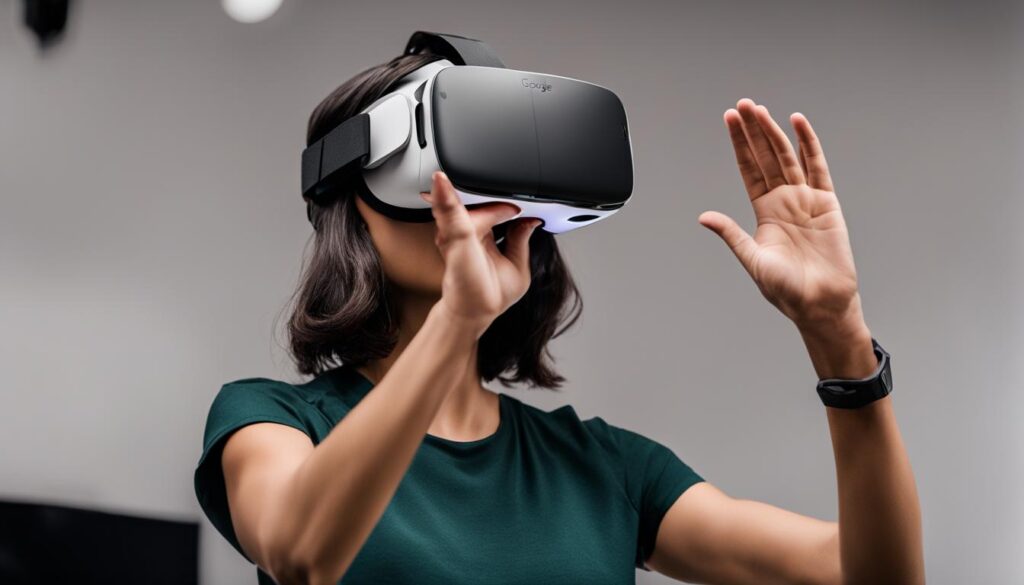
Best Google Cardboard Apps for Augmented Reality
Google Cardboard offers a plethora of apps that can be adapted for augmented reality experiences. These apps provide a range of immersive and interactive AR experiences, catering to various interests and preferences. Whether you want to explore educational content, embark on exciting adventures, or engage in innovative storytelling, there’s an AR app for everyone. Here are some of the best Google Cardboard apps that can enhance your augmented reality journey:
InCell VR
“InCell VR” is a captivating blend of action and strategy, intertwining bioscience concepts within an immersive AR environment. Through stunning visuals and engaging gameplay, this app takes you on a mesmerizing journey inside the human body. Use your strategic skills to navigate through different cellular structures and unlock the secrets within.
Expeditions
“Expeditions” is an educational tool that allows users to travel the world through virtual reality. With the ability to adapt for augmented reality, this app provides an enriched learning experience. Explore famous landmarks, historical sites, and natural wonders, accompanied by informative narration and 360-degree immersive visuals.
Google Street View
“Google Street View” brings the world to your fingertips, providing an opportunity to explore famous landmarks, cities, and neighborhoods. With augmented reality capabilities, you can take virtual tours of iconic places, navigate through streets, and get a unique perspective of the world around you. Discover new places and immerse yourself in different cultures without leaving your home.
Within VR
“Within VR” is a platform that offers a wide range of immersive experiences, including captivating AR content. Dive into breathtaking stories, films, and performances, all within the virtual world. With its impressive collection of immersive content, Within VR is a must-have app for any AR enthusiast.
InMind VR
“InMind VR” takes you on a journey through the human brain, combining educational elements with an engaging storyline. Dive into the intricate world of neural connections, unravel mysteries, and learn about the wonders of the human mind. This app offers a unique, educational, and visually stunning AR experience.
War of Words VR
“War of Words VR” is a visually striking, immersive game that challenges you to wield the power of words in a battle of wits. Step into a world where literature comes to life, solving puzzles and overcoming obstacles using words and clever thinking. Engage in a literary adventure that fuses augmented reality with the magic of storytelling.
| App Name | Description |
|---|---|
| InCell VR | Action-packed and strategic journey inside the human body. |
| Expeditions | Explore the world through immersive virtual tours. |
| Google Street View | Discover famous landmarks and navigate cities in AR. |
| Within VR | Immerse yourself in captivating stories and performances. |
| InMind VR | Journey through the human brain in an educational experience. |
| War of Words VR | Engage in a literary adventure using the power of words. |
These apps are just a glimpse of the exciting augmented reality experiences that can be enjoyed on Google Cardboard. Whether you’re seeking entertainment, education, or a mix of both, these apps provide a wide range of options to enhance your AR journey.
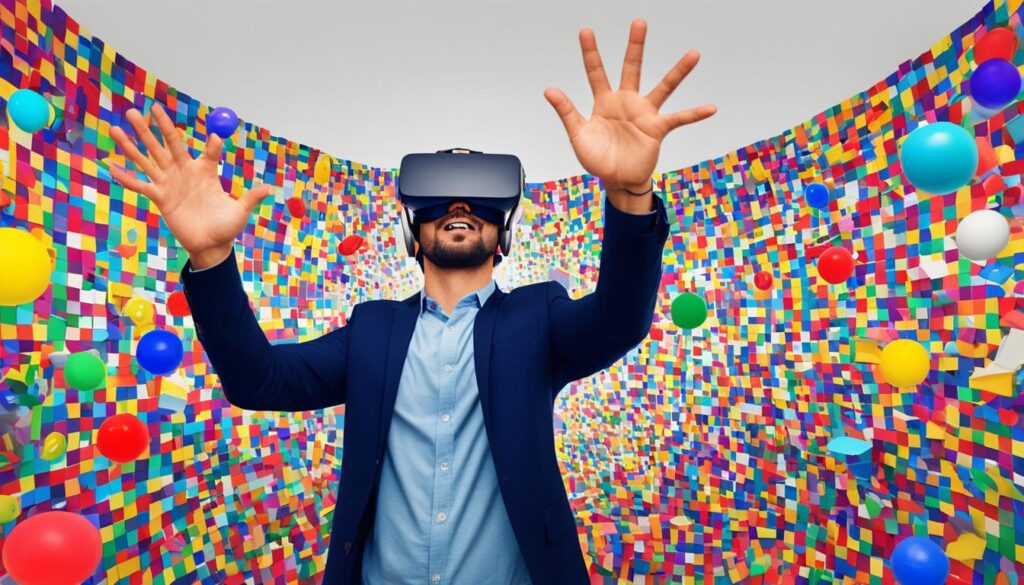
Advantages of Adapting Google Cardboard for Augmented Reality
Adapting Google Cardboard for augmented reality (AR) opens up a world of possibilities, allowing you to create and customize your own immersive AR experiences. With a step-by-step guide, you can easily transform your Google Cardboard into an AR device and explore the creative potential of this affordable platform. Let’s take a closer look at some of the advantages of using Google Cardboard for AR:
- Cost-effectiveness: DIY augmented reality with Google Cardboard is a budget-friendly alternative to expensive AR devices. By leveraging your existing smartphone and the Google Cardboard viewer, you can enjoy AR experiences without breaking the bank.
- Accessibility: Google Cardboard is readily available and compatible with a wide range of smartphones. This accessibility makes it easier for anyone, regardless of technical expertise, to get started with AR.
- Use existing smartphones: With Google Cardboard, there’s no need to invest in additional hardware. You can use your current smartphone to power the AR experiences, eliminating the need for costly upgrades.
By harnessing the power of Google Cardboard and following a step-by-step guide, you can unlock the potential of DIY augmented reality and create personalized AR content. The next section will provide some tips to enhance your Google Cardboard experience for augmented reality.
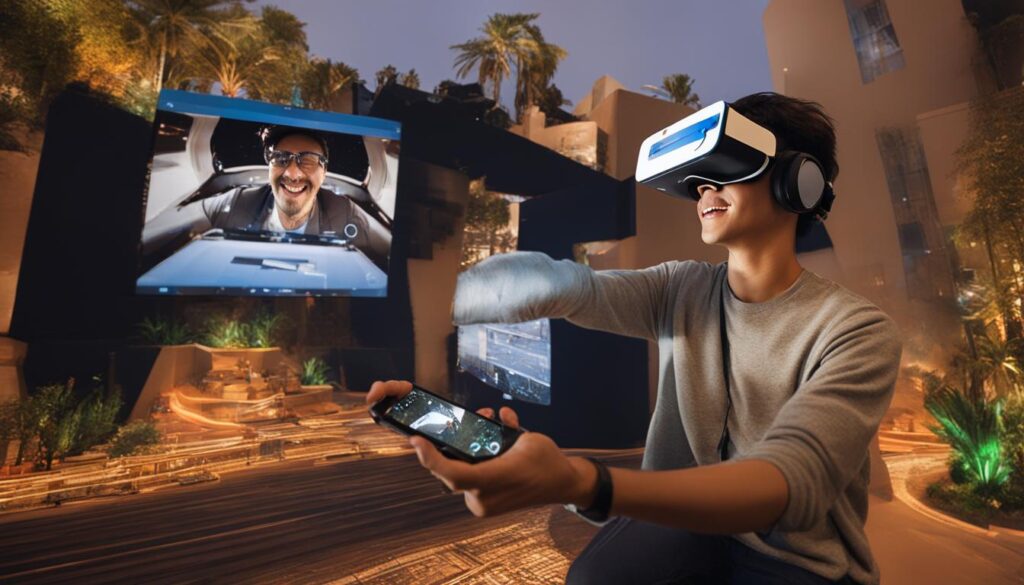
Comparison of Google Cardboard and Other AR Platforms
| Platform | Cost | Compatibility | Hardware | DIY Potential |
|---|---|---|---|---|
| Google Cardboard | Affordable | Wide compatibility with Android and iOS | Viewer + smartphone | High |
| Oculus Quest | Expensive | Limited compatibility | Standalone headset | Low (not designed for DIY modifications) |
| Microsoft HoloLens | Very expensive | Limited compatibility | Head-mounted display | Low (not designed for DIY modifications) |
Tips for Enhancing Google Cardboard for Augmented Reality
To enhance the AR capabilities of Google Cardboard, there are a few tips that can take your experiences to the next level.
- Upgrade your smartphone: Using a higher-end smartphone with better display and processing capabilities can greatly improve the quality and performance of your AR experiences on Google Cardboard. Look for devices with higher resolution screens and powerful processors to ensure a more immersive and realistic AR experience.
- Utilize Bluetooth controllers: Enhance the interactivity and controls of your AR apps on Google Cardboard by pairing Bluetooth controllers or other input devices. This allows for more precise and intuitive interactions within the AR environment, making the overall experience more engaging and enjoyable.
- Explore third-party AR apps and tools: Expand the range of AR experiences available on Google Cardboard by exploring third-party apps and tools. These apps offer a broader selection of AR content, including games, educational experiences, and creative tools. Experimenting with different apps can help you discover new and exciting ways to use Google Cardboard for AR.
By following these tips, you can enhance your Google Cardboard experience, taking full advantage of its potential for augmented reality.
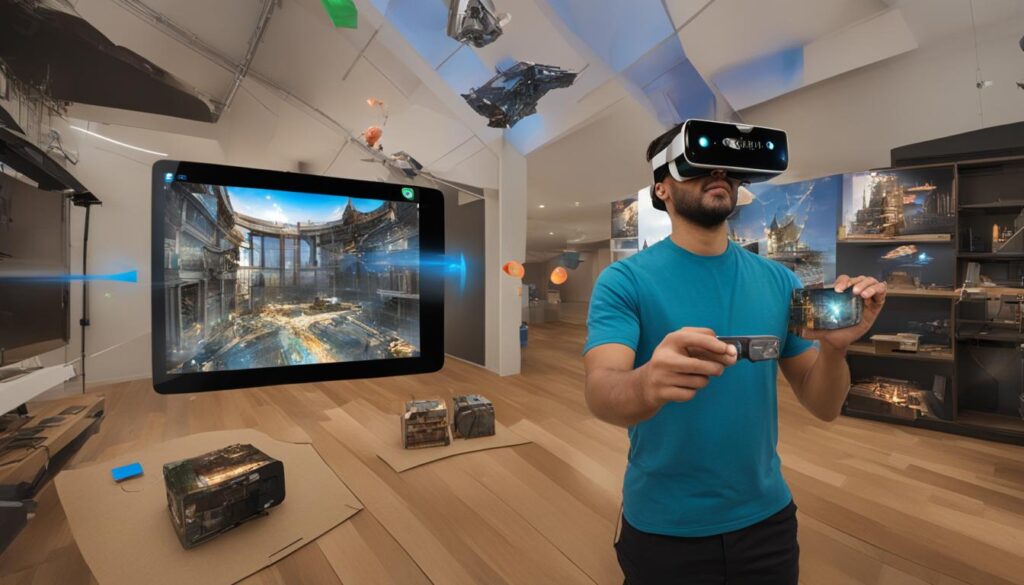
Conclusion
Adapting Google Cardboard for augmented reality (AR) opens up a world of possibilities for creating and experiencing DIY AR content. With its affordable price and accessibility, Google Cardboard provides a platform for anyone to explore the exciting field of augmented reality. By following the steps and tips outlined in this article, you can easily adapt Google Cardboard for AR and unlock new experiences.
Whether you’re a developer, student, or simply an AR enthusiast, Google Cardboard offers a gateway to the world of augmented reality. Its low cost and simplicity make it an ideal choice for experimenting with AR technologies. By enhancing the capabilities of your Google Cardboard, you can take your AR experiences to the next level.
With Google Cardboard, you can create your own customized AR content or explore a wide range of AR apps available. From immersive storytelling to educational tools and exciting games, the possibilities are endless. Whether you want to learn, create, or just have fun, Google Cardboard can provide you with captivating AR experiences.
In conclusion, Google Cardboard is a versatile and affordable option for those interested in augmented reality. By adapting it for AR, you can unlock a whole new level of interactivity and immersion. So, grab your Google Cardboard, follow the tutorials, and dive into the world of augmented reality right from the palm of your hand.
FAQ
How can I adapt Google Cardboard for augmented reality?
To adapt Google Cardboard for augmented reality, you can follow a few simple steps to modify the platform and unlock new AR experiences.
What are some popular Google Cardboard apps for augmented reality?
Some popular Google Cardboard apps for augmented reality include InCell VR, Expeditions, Google Street View, Within VR, InMind VR, and War of Words VR.
What are the advantages of adapting Google Cardboard for augmented reality?
Adapting Google Cardboard for augmented reality offers advantages such as cost-effectiveness, accessibility, and the ability to use existing smartphones for AR experiences.
How can I enhance the AR capabilities of Google Cardboard?
To enhance the AR capabilities of Google Cardboard, you can use a higher-end smartphone, utilize Bluetooth controllers or other input devices, and explore third-party AR apps and tools.

